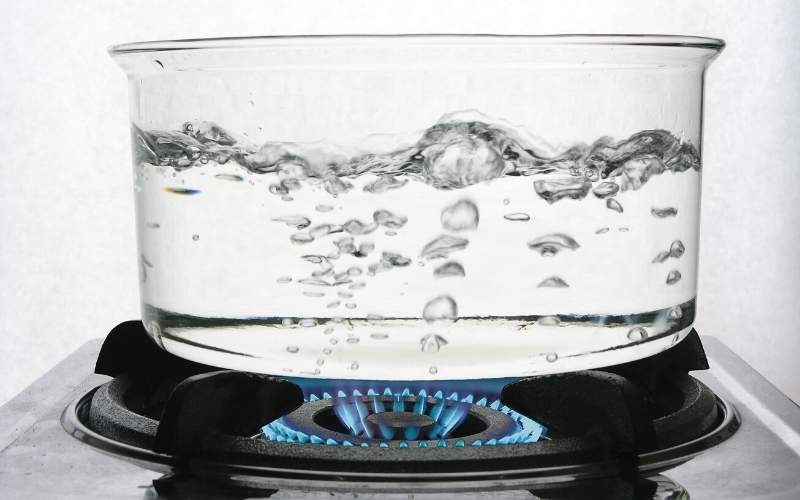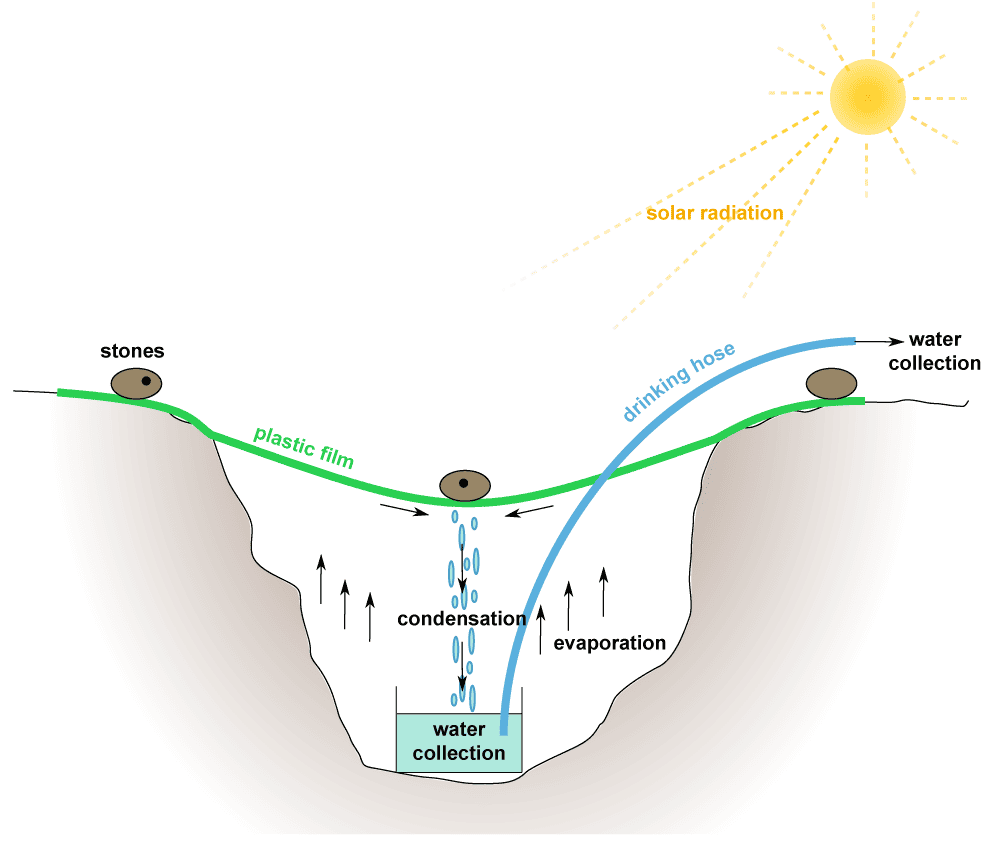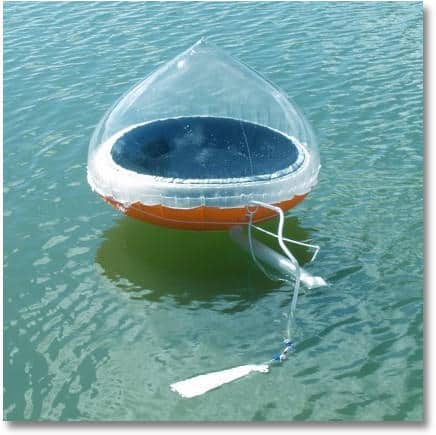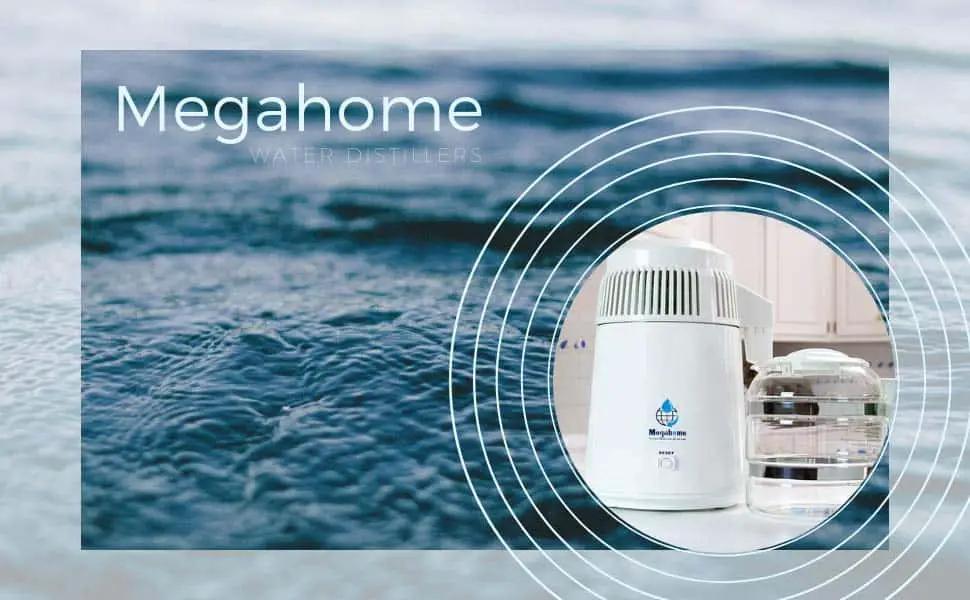Water covers roughly 71% of the face of the Earth and of that only about 2.5% is freshwater. Of Course, this means that the vast majority of the Earth’s water is sea or saltwater. Considering this fact makes one wonder, “Can saltwater be made drinkable?” The purpose of this article is to explore the ways in which you can make saltwater drinkable.
The process that is being used to convert salt water into drinkable water is called “desalination”. This process is being used more and more around the world to provide people with needed freshwater.
Can You Boil Salt Water to Drink?
No, boiling salt water doesn’t make it safe to drink because the salt will remain even after the water has been boiled. To make saltwater drinkable, you need to go through a desalination process which will remove salt from the water.
See more about boiling water from the WHO.

According to the World Health Organization (WHO), a water temperature of 158°F (70°C) will kill 99.999% of bacteria, pathogens, protozoa, and viruses in less than 1 minute. Since water boils at 212°F (100°C), this means that by the time the water has reached a full boil, it will be safe to drink unless it is saltwater.
Desalination, What is it?
The removal of salts from saline (salt) water to provide freshwater is called Desalination. Saltwater is desalinated to produce water suitable for human consumption, sanitation, or irrigation.
Desalination is used on many seagoing ships and submarines. Most of the modern interest in this process is focused on creating a cost-effective provision of freshwater for people to drink and use. This method is becoming a more popular way of providing fresh water for people to drink and use.
So how do you make salt water drinkable through desalination?
To make seawater drinkable, you not only need to decontaminate and purify it, but you also have to remove the salt. Drinking large quantities of sea or salt water can be lethal because of the strain it puts on your organs. Your kidneys have no choice but to go into overdrive trying to filter out the salt, not to mention that water that has high salt content is never going to rehydrate you. Several ways exist of separating salt from water with basic equipment, and other ways that you can use without spending money on equipment that involves boiling the water. You can’t just boil the saltwater however, you can boil it and collect the steam, meaning you distill it.
5 easy ways to make sea or saltwater drinkable right from home
Here are 5 ways in which you can make sea or salt water drinkable. The first 3 ways that I will discuss will be fun innovative ways that can be done with basic stuff from home. The last 2 ways are by using two different but handy devices that are available to purchase.
- Stove Top: Use a pot, lid, stove, and a cup or bowl
- Solar Desalination: Use a large bowl, a cup or smaller bowl, a sheet of plastic, and a small pebble or rock
- Solar Desalination: Use a bowl or container, a plastic sheet, and small rocks
- Aquamate Solar Still Emergency Water Purification Inflatable Kit
- Megahome Countertop Water Distiller
3 innovative DIY ways to make sea or saltwater drinkable with basic everyday supplies from home
- Stove Top: Use a pot, lid, stove, and a cup or bowl
- Solar Desalination: Use a large bowl, a cup or smaller bowl, a sheet of plastic, and a small pebble or rock
- Solar Desalination #2: Use a bowl or container, a plastic sheet, and small rocks
1. Stove Top: Use a pot, lid, stove, and a cup or bowl
Needed Materials:
- Pot
- Lid (The pot at lid should go together and make sure the lid’s handle is in the middle of the lid)
- A glass cup or bowl
- Stove
You will want to place a glass/metal cup or bowl (or another type of cup that can withstand hot temperatures) in the center of the pot, then slowly pour the saltwater in the pot so it surrounds the cup. Be Careful not to get ANY saltwater in the cup because this is where your fresh water will be collected. Then put a lid that has a handle in the center upside down on the pot so that as the water steams (evaporates) the lid will catch the water particles and drip down off the lid handle and into the cup.
- Make sure the pot lid has a good seal with the edges of the pot.
- Without a good seal, a lot of the steam will escape and this will reduce the supply of fresh water vapor.
Next, slowly bring the water to a boil. It is a good idea to set your stove to low heat so that the water will not splash around and into your cup. Additionally, you will want to leave a decent space between the top of your cup and the water level in the pan.
Watch the water as it begins to boil and condenses. The condensed water droplets that collect on the lid and drip into your cup will have left behind all the dissolved salt. This process may take up to 30 minutes. Once the water in your cup has reached a desirable level then turn the stove off so it may cool. You may want to carefully remove the cup from the pot so that it can cool faster. Be extremely careful to not burn yourself (use oven mitts or some type of protection) and don’t dump out the fresh water that you have worked so hard to collect.
Finally, once the water has cooled it will be ready to drink!
2. Solar Desalination: Use a large bowl, a cup or smaller bowl, a sheet of plastic, and a small pebble or rock
Needed Materials:
- Large bowl or container
- Cup or smaller bowl
- Sheet of Plastic
- Small rock or pebble
This next innovative way to distill water is called solar desalination. First, collect salt or seawater in the large bowl or container. Make sure that you don’t fill the large bowl to full because you will need to put a smaller bowl in the saltwater in the middle of the larger bowl. Then place an empty smaller bowl or container in the center of the larger one.
- Be careful not to splash saltwater into the small bowl because that will contaminate your drinking water.
Next, you will take a sheet of plastic wrap and cover the larger bowl with it. Make sure that the plastic wrap is sealed tightly around the bowl so that you don’t lose any of the water vapor as it evaporates from the saltwater. You’ll want to use good, sturdy plastic wrap and not the cheap kind that tears easily or has a hard time sticking.
Lastly, place a small rock or pebble in the middle of your plastic wrap directly over your empty smaller cup or bowl. Use a light rock so that it doesn’t tear or bring down your plastic wrap. Make sure that you have placed your set up in direct sunlight so that the solar desalination process can take effect without hindrance. The sun will help the water evaporate and the plastic wrap will catch the condensation which will run down the plastic to the rock weighted spot where it will drip into the freshwater cup. After only a few hours… the length of time it takes is the downside… it will give you fresh water to drink!
3. Solar Desalination #2: Use a bowl or container, a plastic sheet, and small rocks

*This personal desalination plant idea comes from USGS visit their article for more great information.
This is considered a “solar still” which uses heat from the sun to run a distillation process to cause dew to form on a plastic sheeting or something similar.
- Dig a pit in the ground
- Place a bowl at the bottom of the pit that will be used to catch the condensed water
- Cover the pit loosely with a plastic sheet (you can use stones or other heavy objects to hold it in place over the pit)
- Be sure that the lowest part of the plastic sheet hovers directly over the bowl
- Leave your water “trap” overnight and water can be collected from the bowl in the morning
It is important to note that direct sunlight is important for this process to work well just like when using a bowl inside a smaller bowl method mentioned above in the # 2 method. The exciting thing about this solar desalination process is that it only requires one water collection container, plastic sheet or something similar, and rocks. Super easy and simple! The downside, like all the other methods, is that it takes several hours so be patient.
2 easy ways to make salt or seawater drinkable are purchasing these handy devices
- Aquamate Solar Still Emergency Water Purification Inflatable Kit (click here to check the price on Amazon)
- Megahome Countertop Water Distiller (click here to check the price on Amazon)
1. Aquamate Solar Still Emergency Water Purification Inflatable Kit

If you are interested in the Aquamate Solar Water Purification Kit (link to check the price on Amazon) check it out!
Positives
The positives of this Aquamate blowup water purification kit are that it comes in a small, easy to carry, inflatable kit and the what I like most about it is that it does not require any power or electricity. The sun is what powers the desaliniation process. It doesn’t have to be sitting in water but you do need to put the saltwater in the device for it to work, kind of like the solar desalination method that I talked about above. We found that this product makes it easy and works great, however, it is very slow!
- Dimensions: 13 in. X 11 in. X 3.5 in. Weight: 38 oz.
I find this product to be very easy (EZ) to use and extremely useful to have on hand if you are ever in need of converting saltwater (or other contaminated water) into fresh drinkable water.
Negative
The one negative thing about the Aquamate water purification kit is that it is painfully slow.
2. Megahome Countertop Water Distiller

Interested in the Megahome Countertop Water Distiller (click here to check the price on Amazon)!
General Info
This Megahome converts 1-gallon water into steam and then condensed into distilled water in about 5 hours. The interior boil chamber, including upper cover and the condensing coils are Stainless Steel. It comes with a 1-gallon glass collection bottle with a removable lid. It does provide an easy and automatic way to distill your own water, simply fill the boiling chamber with water and press the button. At the end of the cycle, the distiller will turn off automatically. The outside body of this distiller is metal with a white baked finish.
What’s Included:
- Condensing Unit
- Distiller Body
- Glass Collection Bottle
- Activated Charcoal Sachets, 1 package of 6 filters (approximately a 6 month supply)
- Cleaner for Boil Chamber, 8oz
- Power Cord
- Porcelain Nozzle Insert
This distiller is 110-120 volt.
Positives
I have found this unit to be very useful in distilling and purifying contaminated or salt water into clean water. Using a Total Dissolved Solids (TDS) tester to test tap water and the meter read 102 ppm (even after being pre-filtered by a Whirlpool Chemical reduction filter). After distilling the water with the Megahome distiller, the meter read 0 ppm. It works like a charm.
*ppm stands for parts per million and it is the concentration of something in water.
Negatives
As of now, I have found very few problems with the device except it requires a power to operate whereas the Aquamate Solar is powered by the sun.
In Conclusion
Sea or saltwater can be converted into fresh drinking water by using one of the 5 ways suggested above. Considering that the Earth is about 71% water and most of that is salt water, it is helpful to know ways of how to convert that salt water into drinkable water. This process can be slow and painful to watch but I suggest you try one or all of them if you are interested. We love using the easy (EZ) ways to prepare for emergencies so naturally we really enjoy the Aquamate Solar Inflatable Kit and the Megahome Water Distiller so give them a shot! It is empowering to know how to convert saltwater into fresh drinking water and convenient to have the two above mentioned items to make it happen. Good Luck!

